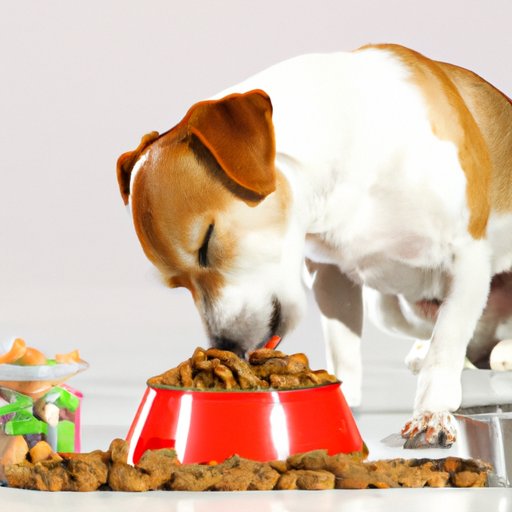Introduction
Getting a picky eater to start chowing down on their meals can be a challenge, especially when it comes to getting your beloved pup to eat. Whether your pet is refusing to eat altogether or just not eating enough, knowing how to get your dog to eat can make all the difference in their overall health and wellbeing.
It’s important to understand why your dog may be hesitant to eat in the first place. In some cases, it could be due to an underlying medical issue, such as an upset stomach or dental problems. It could also be due to stress or anxiety, or even boredom if they’ve been eating the same type of food for too long.
Whatever the cause, taking action is key to getting your pup back on track. The following tips will help you make mealtime more enjoyable for your furry friend and ensure they get the nutrition they need.
Introduce New Foods Gradually
When switching up your pup’s diet, it’s best to introduce new foods gradually. This allows them to become accustomed to the different flavors, textures, and smells without overwhelming their senses. Start by mixing small amounts of the new food in with their current food and slowly increasing the ratio over time.
According to Dr. Sarah Wooten, an experienced veterinarian, “The rule of thumb is to take seven to ten days to transition from one food to another. Start with 25 percent of the new food mixed with 75 percent of the old food and increase the ratio of new food to old food each day. By the end of the transition period, your pet should be eating 100 percent of the new food.”
Make Mealtime Fun
Eating can quickly become mundane if your pup eats the same thing every day. To keep them interested, try adding variety to their meals. You can do this by rotating between wet and dry food, or offering a combination of both. You can also incorporate treats into their meals to make them more enticing.
Using toys or puzzles during meal time can also help encourage your pup to eat. According to Dr. Wooten, “These activities stimulate their brains and can help channel their natural instinct to hunt and forage for food.”
Change Up the Routine
If your pup has become bored with their current routine, changing up their meal times and types of food can help get them excited about eating again. Try offering different types of food on different days, such as wet, dry, or raw. You can also mix in some homemade meals or fresh fruits and vegetables.
Varying meal times can also help keep your pup engaged. If you usually feed them once a day, try splitting it into two or three smaller portions throughout the day. You can also use positive reinforcement to reward them for finishing their meals.
Incorporate Healthy Treats
Treats are great for rewarding good behavior and encouraging your pup to eat, but it’s important to choose ones that are healthy and nutritious. Look for treats made with natural ingredients and avoid those with added sugar or artificial flavors.
It’s also important to monitor the number of treats you give them. According to Dr. Wooten, “Treats should make up no more than 10 percent of your pet’s daily caloric intake.”
Be Mindful of What You Feed Your Dog
When selecting food for your pup, it’s essential to read the labels and look for high-quality ingredients. Avoid foods with fillers, corn, wheat, and soy, which can be hard for dogs to digest. Also, be mindful of any allergies your pup may have and look for foods that are free from potential allergens.
Consult a Veterinarian
If your pup still isn’t eating after trying these tips, it’s best to consult a veterinarian. They can help diagnose any underlying medical issues and provide advice on dietary changes.
Conclusion
Getting your pup to eat can be a challenge, but it doesn’t have to be. By introducing new foods gradually, making mealtime fun, changing up their routine, incorporating healthy treats, and being mindful of what you feed them, you can help ensure your pup gets the nutrition they need. If all else fails, don’t hesitate to consult a veterinarian for professional advice.
Remember, it takes time and patience to get your pup to eat, but the effort will be worth it in the end. With the right approach, you can help your pup enjoy mealtime again and get the nutrition they need to stay healthy and happy.
(Note: Is this article not meeting your expectations? Do you have knowledge or insights to share? Unlock new opportunities and expand your reach by joining our authors team. Click Registration to join us and share your expertise with our readers.)
